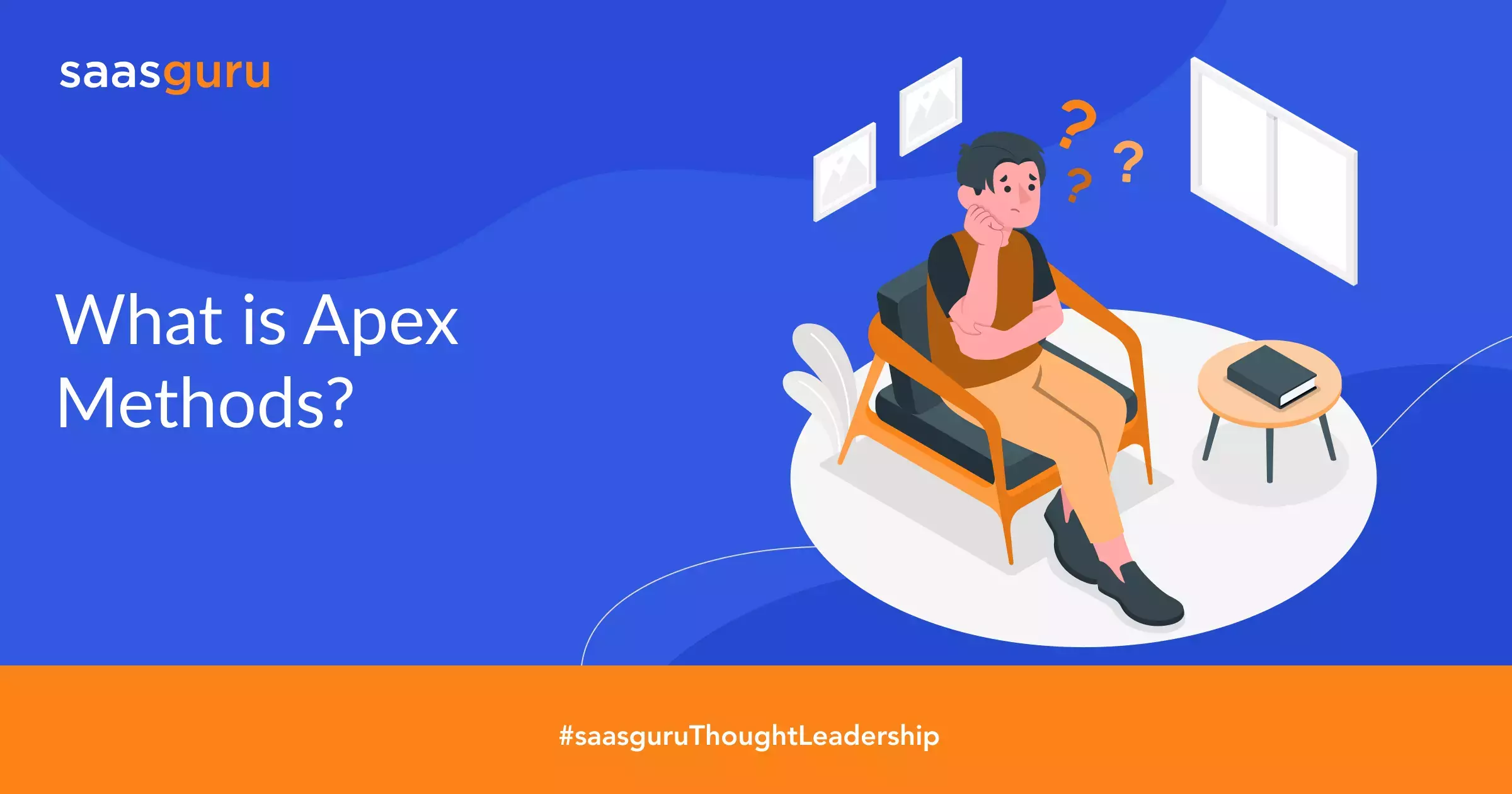Apex is a multi-tenant programming language used by Salesforce developers for building business applications. Apex transforms the Method used by developers to create on-demand applications.
In Salesforce, developers can use Apex to create CRM applications, and they can also create 3rd party SaaS applications. Apex also offers other features, such as customization of the pre-built applications according to the business needs and requirements.
Apex Methods are powerful tools that can help you automate processes and make workflows more efficient. By using Apex, you can declaratively specify the order in which actions should be taken and configure your methods to be triggered by specific events. This makes it easy to ensure that your processes always keep up with your business needs.
This guide will help you understand Apex Class Methods and how they are helpful for building applications on the Salesforce platform.
What is Apex?
Apex is a proprietary programming language developed by Salesforce. It is an object-oriented and robust programming language for building CRM and other business applications.
Developers can also use this programming language to build 3rd party SaaS applications and customize other system events like Visualforce button clicks and pages. It is possible by providing back-end database support and client-server interfaces.
Apex also allows the developers to implement flow control and transactional statement with the Force.com API on its server.
The syntax of Apex is similar to Java, and the programming language is also based on Java. But some syntax and classes are different because they have web development features more than app development features.
You can enjoy coding Apex in various Salesforce editions like Developer Edition and sandbox environments of Enterprise Edition and Unlimited Edition.
Now that you’re familiar with the Apex language and its usage let’s look at the features of Apex before getting into the nitty-gritty of Apex Class Methods.
Top Features of Apex
The features of Apex language are as follows:-
- The language provides easy testing. It supports unit execution and creation and gives the test results about the code coverage. Furthermore, it defines the coding parts that can be organized effectively.
- It runs in a shared environment. So, Apex is designed not to affect the shared resources, and the engine saves it from the runaway code. A simple error text appears whenever the code breaches the limits.
- The Apex language is a strongly typed language that runs with direct reference to Schema Objects. If an object belongs to the incorrect data type, it fails immediately.
- Apex is created to implement multiple queries and DML together. It gives various transaction statements on the database. So, it is firmly integrated with data.
- Apex programming language is an easy-to-use language that anyone can learn with the right resources and approach. It uses Java-like Syntax—for example, Variable Declaration, Loop Syntax, object, array notation, etc.
- As a part of the Salesforce platform, Apex upgrades automatically. So the developers don’t have to worry about upgrading it manually.
- Apex has built-in support for DML operations. It also supports Salesforce Object Search Language (SOSL) and Salesforce Object Query Language (SOQL) query handling.
Before understanding Apex Class Methods, let’s learn more about Apex Classes in Salesforce.
Also, Read about What is the Salesforce AppExchange?
Apex Classes in Salesforce
Just like in Java, you can write Classes in Apex. A Class is a blueprint to create Objects. An object is an instance of a Class.
A Class can have Methods and Variables. To specify the state of an object, we use Variables. Variables are related to the Class, also known as Member Variables. To control the behavior of the Class, we use Methods.
Apex Class Methods
There are two modifiers for Class Methods-
- Private
- Public
And the Return Type is necessary for Method.
You have to specify the following to define a Method:-
- Optional:- Modifiers such as public or protected
- Required:-
- The data type of the value returned by the Method. You can use Void if the value is not returned by the Method.
- A list of input parameters for the Method, separated by commas, each preceded by its data type, and enclosed in parentheses (). If there are no parameters, use a set of empty parentheses. A method can only have 32 input parameters.
- The body of the Method, enclosed in braces {}
You can use the user-defined methods anywhere in the system. User-defined methods can also be recursive and have consequences like DML insert statements. They can be polymorphic. For Example, a method called Example can be executed in two ways- by using Two Integer Parameters and Single Integer Parameters.
When defining a method, adhere to the following syntax:
[<access_modifier>] [static] <return_type> <method_name> ([<parameter_list>]) {
// Method body
}
Where:
- <access_modifier>: Indicates the access level of the method, such as public, private, protected, or global.
- static (optional): Specifies whether the method is a static method.
<return_type>: Represents the data type of the value returned by the method. You can use void if no value is returned. - <method_name>: Specifies the name of the method.
- <parameter_list> (optional): Contains a list of input parameters for the method, each with its data type, separated by commas and enclosed in parentheses.
EXAMPLE :
public static String greetUser(String userName) {
return ‘Hello, ‘ + userName + ‘!’;
}
In the example above:
- public is the access modifier.
- static indicates that the method is static.
- String is the return type.
- greetUser is the method name.
- (String userName) is the parameter list with a single parameter of type String.
Also, Read about Salesforce Dynamic Forms
Access Modifiers
You can use Access Modifiers for class methods to specify access levels:
- Global – Accessible by all the Apex classes
- Public – Access from anywhere in and outside the Class
- Private – Accessible only within the Class
Summing Up
Learning the Apex programming language can seem a daunting task at first, but if you aspire to be a Salesforce developer, then you must know the basics and have working knowledge to clear the certification. This guide introduced you to Apex and Apex Class Methods, and we have only scratched the surface till now. It would be best if you learned more about these practice writing Apex Classes to make yourself perfect with programmatic development in Salesforce.
Sign Up now to get more information about Salesforce features and concepts.
Take that first step towards your Salesforce developer career by enrolling in our online Salesforce Platform Developer 1 course and getting certified on your first attempt.
Frequently Asked Questions (FAQs)
1. What is Apex used for in Salesforce?
Understanding ‘what is Apex’ is fundamental for anyone looking to customize their Salesforce applications beyond what’s possible through standard configuration. Apex is used for writing business logic in the form of triggers and classes, performing complex validation over multiple objects, creating complex business processes that are not supported by workflow, and making calls to external APIs from Salesforce to integrate with external systems.
2. What is the process for creating events using Apex in Salesforce?
Creating events using Apex in Salesforce involves defining an Apex trigger or class that can execute DML operations on Event objects. This process requires a solid grasp of Apex and its capabilities. First, you define the event’s parameters, such as the start time, end time, subject, and attendees. Then, you instantiate an Event object in Apex and assign values to its fields according to the event details you want to create. Finally, you use a DML operation, such as insert, to save the new Event record to the Salesforce database. Apex provides the flexibility to automate and customize the creation of events based on specific business logic, making it a powerful tool for managing Salesforce calendars and schedules programmatically.
3. What is the scope of a static variable in Salesforce Apex?
In Salesforce Apex, a static variable’s scope is confined to the lifespan of the application execution context in which it is declared. Understanding ‘what is Apex’ includes understanding how it handles static variables, which are shared among all instances of a class. Static variables are not serialized; their values are not stored and do not persist between transactions. This means that the value of a static variable is reset between API calls or page requests. However, within a single execution context, such as an Apex transaction or a Visualforce page request, the static variable retains its value, allowing it to be used to store information that can be accessed by any instance of the class or to maintain state across method calls.










